A coreceptor-independent transgenic human TCR mediates anti-tumor and anti-self immunity in mice
- PMID: 22798675
- PMCID: PMC3674773
- DOI: 10.4049/jimmunol.1103271
A coreceptor-independent transgenic human TCR mediates anti-tumor and anti-self immunity in mice
Abstract
Recent advancements in T cell immunotherapy suggest that T cells engineered with high-affinity TCR can offer better tumor regression. However, whether a high-affinity TCR alone is sufficient to control tumor growth, or the T cell subset bearing the TCR is also important remains unclear. Using the human tyrosinase epitope-reactive, CD8-independent, high-affinity TCR isolated from MHC class I-restricted CD4(+) T cells obtained from tumor-infiltrating lymphocytes (TIL) of a metastatic melanoma patient, we developed a novel TCR transgenic mouse with a C57BL/6 background. This HLA-A2-restricted TCR was positively selected on both CD4(+) and CD8(+) single-positive cells. However, when the TCR transgenic mouse was developed with a HLA-A2 background, the transgenic TCR was primarily expressed by CD3(+)CD4(-)CD8(-) double-negative T cells. TIL 1383I TCR transgenic CD4(+), CD8(+), and CD4(-)CD8(-) T cells were functional and retained the ability to control tumor growth without the need for vaccination or cytokine support in vivo. Furthermore, the HLA-A2(+)/human tyrosinase TCR double-transgenic mice developed spontaneous hair depigmentation and had visual defects that progressed with age. Our data show that the expression of the high-affinity TIL 1383I TCR alone in CD3(+) T cells is sufficient to control the growth of murine and human melanoma, and the presence or absence of CD4 and CD8 coreceptors had little effect on its functional capacity.
Figures
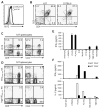
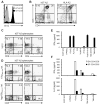
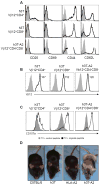
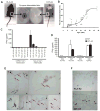
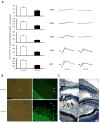

Similar articles
-
CD8-independent tumor cell recognition is a property of the T cell receptor and not the T cell.J Immunol. 2003 Mar 1;170(5):2582-9. doi: 10.4049/jimmunol.170.5.2582. J Immunol. 2003. PMID: 12594285
-
Simultaneous generation of CD8+ and CD4+ melanoma-reactive T cells by retroviral-mediated transfer of a single T-cell receptor.Cancer Res. 2005 Feb 15;65(4):1570-6. doi: 10.1158/0008-5472.CAN-04-2076. Cancer Res. 2005. PMID: 15735047
-
Both CD4 and CD8 T cells mediate equally effective in vivo tumor treatment when engineered with a highly avid TCR targeting tyrosinase.J Immunol. 2010 Jun 1;184(11):5988-98. doi: 10.4049/jimmunol.1000189. Epub 2010 Apr 28. J Immunol. 2010. PMID: 20427771 Free PMC article.
-
Potential use of T cell receptor genes to modify hematopoietic stem cells for the gene therapy of cancer.Pathol Oncol Res. 1999;5(1):3-15. doi: 10.1053/paor.1999.0003. Pathol Oncol Res. 1999. PMID: 10079371 Review.
-
Interplay between the TCR/CD3 complex and CD4 or CD8 in the activation of cytotoxic T lymphocytes.Immunol Rev. 1989 Jun;109:119-41. doi: 10.1111/j.1600-065x.1989.tb00022.x. Immunol Rev. 1989. PMID: 2527803 Review.
Cited by
-
CCL22 to Activate Treg Migration and Suppress Depigmentation in Vitiligo.J Invest Dermatol. 2015 Jun;135(6):1574-1580. doi: 10.1038/jid.2015.26. Epub 2015 Jan 9. J Invest Dermatol. 2015. PMID: 25634358 Free PMC article.
-
A quantitative increase in regulatory T cells controls development of vitiligo.J Invest Dermatol. 2014 May;134(5):1285-1294. doi: 10.1038/jid.2013.540. Epub 2013 Dec 23. J Invest Dermatol. 2014. PMID: 24366614 Free PMC article.
-
The Evolving T Cell Receptor Recognition Code: The Rules Are More Like Guidelines.Immunol Rev. 2025 Jan;329(1):e13439. doi: 10.1111/imr.13439. Immunol Rev. 2025. PMID: 39804137 Review.
-
Interleukin-12 enhances the function and anti-tumor activity in murine and human CD8(+) T cells.Cancer Immunol Immunother. 2015 May;64(5):539-49. doi: 10.1007/s00262-015-1655-y. Epub 2015 Feb 13. Cancer Immunol Immunother. 2015. PMID: 25676709 Free PMC article.
-
Gene-engineered T cells for cancer therapy.Nat Rev Cancer. 2013 Aug;13(8):525-41. doi: 10.1038/nrc3565. Nat Rev Cancer. 2013. PMID: 23880905 Review.
References
-
- Clay TM, Custer MC, Sachs J, Hwu P, Rosenberg SA, Nishimura MI. Efficient transfer of a tumor antigen-reactive TCR to human peripheral blood lymphocytes confers anti-tumor reactivity. J Immunol. 1999;163:507–513. - PubMed
-
- Duval L, Schmidt H, Kaltoft K, Fode K, Jensen JJ, Sorensen SM, Nishimura MI, von der Maase H. Adoptive transfer of allogeneic cytotoxic T lymphocytes equipped with a HLA-A2 restricted MART-1 T-cell receptor: a phase I trial in metastatic melanoma. Clin Cancer Res. 2006;12:1229–1236. - PubMed
-
- Morgan RA, Dudley ME, Wunderlich JR, Hughes MS, Yang JC, Sherry RM, Royal RE, Topalian SL, Kammula US, Restifo NP, Zheng Z, Nahvi A, de Vries CR, Rogers-Freezer LJ, Mavroukakis SA, Rosenberg SA. Cancer regression in patients after transfer of genetically engineered lymphocytes. Science (New York N Y. 2006;314:126–129. - PMC - PubMed
Publication types
MeSH terms
Substances
Grants and funding
LinkOut - more resources
Full Text Sources
Other Literature Sources
Molecular Biology Databases
Research Materials

